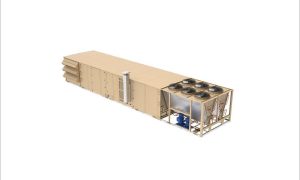Honeywell and Recipharm strategic collaboration aims to lessen the environmental impact of pressurized metered dose inhalers (pMDIs) and expedite the shift toward respiratory care solutions with reduced greenhouse gas emissions.
Honeywell Solstice® Air (HFO-1234ze(E) cGMP) is an environmentally friendly hydrofluoroolefin (HFO) propellant being developed for pMDIs (pressurized metered dose inhalers). It boasts an impressive 99.9 percent reduction in global warming potential compared to HFAs, making it a promising option for medical inhalers. Notably, Solstice Air is non-flammable, doesn’t deplete the ozone layer, and is exempt from volatile organic compound (VOC) regulations at the federal and state levels.
Laura Reinhard, VP and General Manager of Honeywell Foam and Industrial Products said, “Honeywell is dedicated to providing a greener solution for patients reliant on pMDIs, aligning with their commitment to sustainability.” He emphasises that the collaboration with Recipharm will enhance the usage of nearly zero GWP (Global Warming Potential) propellants in pMDIs, minimising the environmental impact of crucial medical treatments while maintaining performance.
Recipharm, the first Contract Development and Manufacturing Organization (CDMO) partnering with Honeywell for Solstice Air, is expediting the development of low greenhouse gas pMDIs. Chris Hirst, President of Recipharm’s Advanced Delivery Systems business unit, highlights the UK site’s production of HFO-1234ze(E) cGMP and the optimization of the Bespak® valve range to ensure reliable product performance.
Recipharm’s collaboration with Honeywell is part of their initiative to enhance pMDI product development and manufacturing in response to growing pharmaceutical demand. Recipharm is also leveraging its advanced Bespak® valves, designed to work seamlessly with products using Honeywell Solstice Air as a propellant.
Honeywell’s Solstice technology has diverse applications, including refrigerants, aerosols, blowing agents, and solvents. The use of this technology has significantly curbed carbon dioxide emissions, preventing the release of an equivalent of over 326 million metric tons of CO2, akin to the annual emissions from about 70 million gasoline-powered passenger vehicles.
For more info visit: sustainability.honeywell.com
Cookie Consent
We use cookies to personalize your experience. By continuing to visit this website you agree to our Terms & Conditions, Privacy Policy and Cookie Policy.














